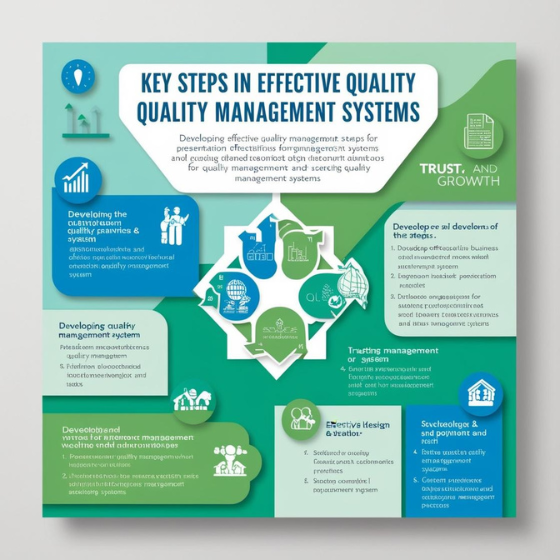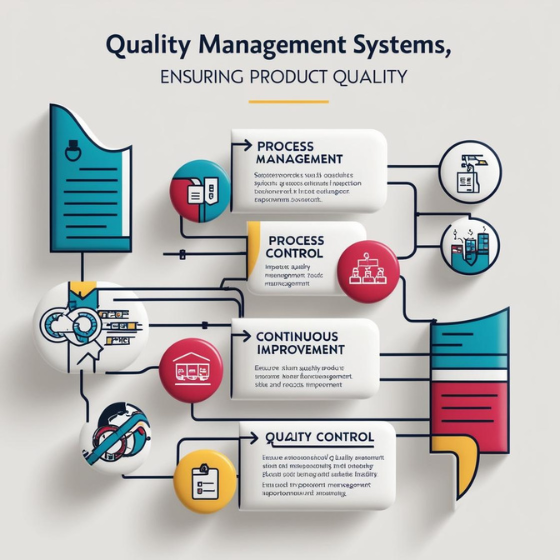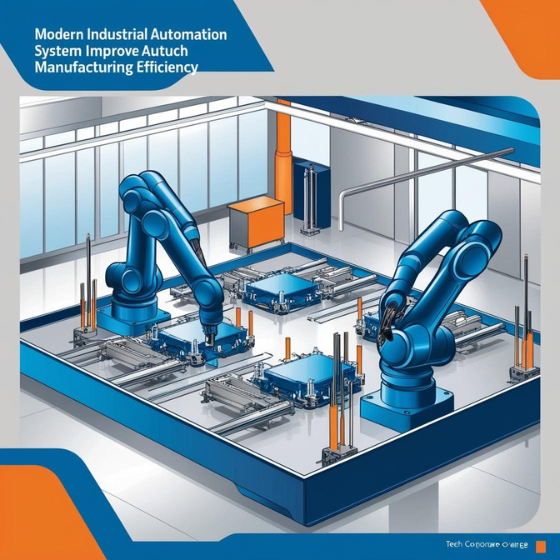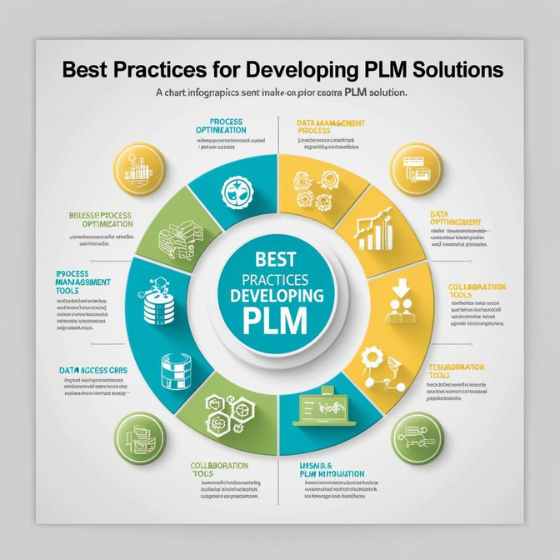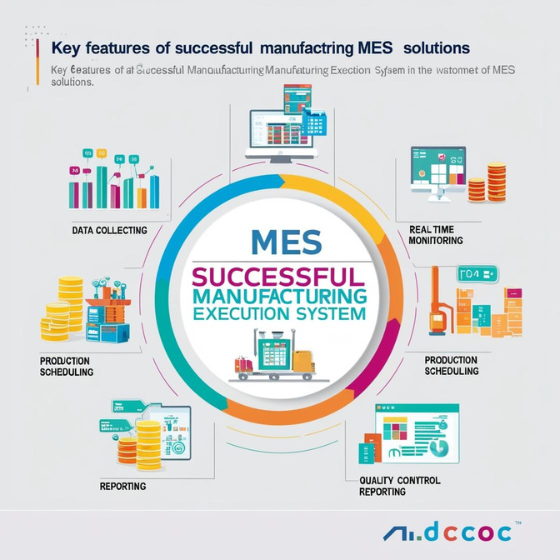How to Develop Effective Quality Management Systems
Introduction
Ensuring consistent product quality is essential for businesses to thrive in competitive markets. A Quality Management System (QMS) is a structured framework designed to help organizations manage quality, reduce defects, and meet customer expectations. But how do you develop an effective QMS that not only meets industry standards but also drives continuous improvement?
In this blog, we’ll guide you through the process of developing a robust QMS, from defining quality objectives to implementing ongoing monitoring and improvements. By the end of this article, you’ll have a clear roadmap for creating a QMS that ensures high-quality outputs while optimizing operational efficiency.
1. Define Clear Quality Objectives and Goals
The first step in developing an effective QMS is defining clear and measurable quality objectives. These objectives should align with your overall business goals and focus on improving product quality, customer satisfaction, and operational efficiency.
Key Steps:
- Identify Business Needs: Understand your market and customer requirements. What quality standards must your products meet to be competitive?
- Set Measurable Goals: Define specific, measurable objectives such as reducing defects by 10% or improving customer satisfaction scores.
- Ensure Alignment: Align quality objectives with broader business goals, ensuring they support growth, efficiency, and profitability.
Example: A manufacturing company sets an objective to reduce waste by 15% within the next year through process optimization and quality control measures.
2. Select the Right QMS Framework
There are several QMS frameworks and standards that businesses can adopt, each with its own benefits and applications. Two of the most widely used frameworks are ISO 9001 and Six Sigma.
Popular QMS Frameworks:
- ISO 9001: The international standard for QMS, focusing on customer satisfaction, process management, and continuous improvement.
- Six Sigma: A data-driven approach focused on identifying and eliminating defects in processes to improve quality and efficiency.
- Lean Manufacturing: A methodology aimed at maximizing value by reducing waste and optimizing processes.
Tip: Choose a framework that aligns with your industry and business objectives. If your company operates internationally, ISO 9001 may be a suitable choice due to its global recognition.
3. Map Out Your Processes and Procedures
Once you’ve defined your quality objectives and chosen a framework, it’s time to map out your company’s core processes. Documenting your processes is essential for maintaining consistency and tracking performance.
Key Steps:
- Identify Critical Processes: Start by mapping out key production and operational processes. These could include procurement, production, inspection, and distribution.
- Define Process Owners: Assign responsibility for each process to ensure accountability and clear ownership.
- Document Standard Operating Procedures (SOPs): Create detailed SOPs for each process to ensure that all team members follow consistent procedures.
Example: A food production company documents SOPs for handling raw materials, cooking, packaging, and shipping to ensure that every batch meets safety and quality standards.
4. Implement Control Measures and Quality Metrics
Control measures and quality metrics are essential for monitoring the effectiveness of your QMS. These metrics help track performance, identify quality issues early, and assess whether your quality objectives are being met.
Key Measures:
- Key Performance Indicators (KPIs): Establish KPIs that align with your quality goals, such as defect rates, customer complaints, and production efficiency.
- Inspection and Testing: Use standardized inspection procedures and testing methods to ensure products meet quality requirements.
- Real-Time Monitoring: Consider implementing real-time monitoring systems that allow you to track product quality during production.
Example: A semiconductor manufacturer uses real-time quality monitoring systems to detect defects in production, allowing them to make immediate adjustments and prevent costly mistakes.
5. Ensure Employee Training and Engagement
A critical element in developing an effective QMS is ensuring that all employees understand their role in quality management. Providing comprehensive training and fostering a culture of continuous improvement will drive the success of your QMS.
Training Essentials:
- Onboarding Programs: New employees should receive training on the company’s quality standards and procedures from day one.
- Continuous Learning: Offer ongoing training sessions to keep employees updated on best practices, new technologies, and process improvements.
- Employee Involvement: Encourage employees to actively contribute to quality improvements through suggestion programs or team-based problem-solving initiatives.
Example: An automotive parts manufacturer implements a training program that covers everything from machine operation to quality inspection techniques, ensuring all employees contribute to quality assurance.
6. Conduct Regular Audits and Reviews
Auditing and regular reviews of your QMS are essential for identifying areas of improvement and ensuring compliance with quality standards. Regular audits help detect potential weaknesses and provide the opportunity to adjust processes accordingly.
Key Audit Activities:
- Internal Audits: Conduct periodic internal audits to assess compliance with the established QMS framework and identify areas for improvement.
- Management Reviews: Hold management reviews at regular intervals to assess the overall performance of the QMS and evaluate whether quality objectives are being met.
- Corrective Actions: When audits identify deficiencies, take corrective actions to prevent recurrence and improve processes.
Pro Tip: Use audit findings to make data-driven decisions and continuously improve your processes.
7. Integrate Technology and Automation
Leveraging technology and automation can greatly enhance the effectiveness of your QMS. Automation tools can streamline quality checks, monitor performance in real time, and reduce human errors.
Technology Integration:
- Quality Management Software (QMS Software): Use software solutions to automate documentation, track quality metrics, and manage audits.
- ERP Integration: Integrate QMS with your Enterprise Resource Planning (ERP) system to ensure seamless information flow across departments.
- Automated Testing and Inspection: Implement automated testing equipment to conduct quality checks faster and more accurately than manual methods.
Example: A pharmaceutical company integrates their QMS with automated testing systems to speed up quality control while ensuring compliance with regulatory standards.
8. Focus on Continuous Improvement
Continuous improvement is a cornerstone of any effective QMS. By regularly assessing processes, collecting feedback, and making incremental improvements, businesses can ensure they stay competitive and consistently meet customer expectations.
Strategies for Continuous Improvement:
- Plan-Do-Check-Act (PDCA): Follow the PDCA cycle to plan improvements, implement changes, monitor results, and adjust as needed.
- Root Cause Analysis: When issues arise, conduct a root cause analysis to understand the underlying problem and prevent recurrence.
- Benchmarking: Compare your processes against industry best practices to identify areas for improvement.
Example: A textile manufacturer conducts regular root cause analysis sessions and implements PDCA cycles to continuously improve the dyeing process, reducing defects by 15% over the past year.
Conclusion
Developing an effective Quality Management System (QMS) is crucial for ensuring product quality, operational efficiency, and customer satisfaction. By defining clear quality objectives, selecting the right QMS framework, and continuously improving your processes, you can create a QMS that not only meets but exceeds industry standards.
At Sodio, we specialize in helping businesses design and implement custom QMS solutions tailored to their unique needs.
Ready to enhance your quality management processes? Contact Sodio today to learn how we can help you develop an effective QMS that drives long-term success.
